Our 2024 Native Plant Sale is concluded. Thank you to all our members and volunteers for making it possible and to our wonderful customers, who are rewilding the Keweenaw, one yard at a time.
Plant Your Own Pollinator Paradise
Welcome to Keweenaw Wild Ones’ 2024 fall native plant sale. This is the perfect time to plant. The seedlings have had a full summer to get big and strong, and the falls rains will tuck them snuggly into the soil before the snow flies.
Check out the plants below and think about what you’d like in your garden. Then visit our shop and place your order. Simple!
Love native plants? Want to take advantage of pre-sales and get a discount? Join the Wild Ones Keweenaw chapter! Sign up here!
How our sales work
Our plant sales are online, but we are not Amazon. If you have trouble checking out, email your order to [email protected].
Otherwise, here’s what to do:
- Browse our plant selection below. You can link to detailed plant information sheets for each offering.
- Go to our Shop and pick out your plants.
- Check out. You may select PayPal or “pay on delivery,” i.e., pay when you pick up.
- If you have trouble checking out, email your order to wildoneskeweenaw at gmail.com.
- Pick up your order, bringing cash or a check if you have not paid with PayPal. You will receive an email reminding you when and where.
WHEN: 10 a.m.–noon, Saturday, September 7, 2024
noon-2 p.m., Sunday, September 8, 2024
WHERE: 1284 Hickory Lane, Houghton
Questions? Email [email protected]
Love native plants? Want to take advantage of pre-sales and discounts? Join the Wild Ones Keweenaw chapter! Sign up here!
Read about these fascinating plants, then visit our shop.
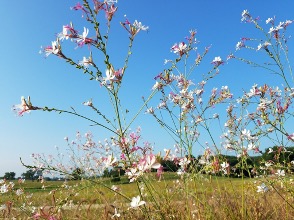
Biennial Gaura
Oenothera gaura
NEW!
The delicate flowers of this short-lived denizen of the prairies start out light pink, then turn a vibrant red/pink color in the late summer to early fall. These colors make this plant attractive to butterflies. Consider it like a black-eyed Susan; it may disappear after two years, but it reseeds readily. Thank heavens!
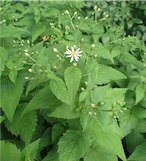
Big-Leaved Aster
Eurybia macrophylla
This is your go-to groundcover for dry shade in the Keweenaw, though it doesn’t mind water at bit. Big-Leaved Asters have large, heart-shaped leaves and blossom in partial shade. The plant is very beneficial to birds: seeds are eaten by song birds in winter, seed fluff provides soft nesting material, Ruffed Grouse and Wild Turkeys eat the seeds and the foliage.
Big-Leaved Asters are a pollinator favorite and attract a wide variety of insects as well as feed the caterpillars of the Silvery Checkerspot and Northern Crescent butterflies. Nectar-collecting pollinators benefit late in the season when few plants are in bloom.
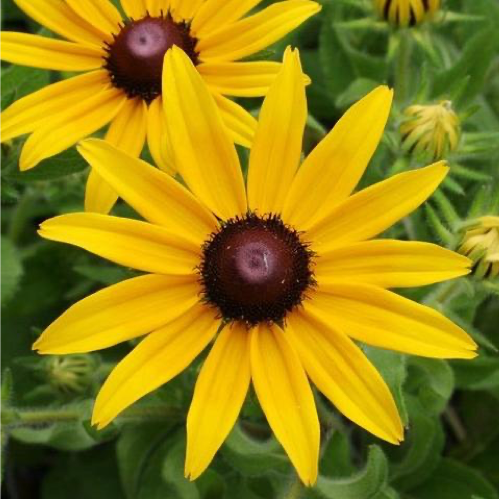
Black-eyed Susan Rudbeckia hirta
This beloved roadside wildflower tolerates nearly all sunny conditions. A biennial or short-lived perennial, it will return year after year if the seeds land in their happy place.
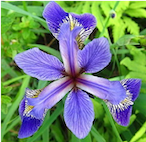
Blue Iris Iris versicolor
Blue Iris has very showy blue-purple flowers that attract hummingbirds and are beneficial to pollinators. It thrives in wetland habitats in sunny areas that include rain gardens, water gardens, wet meadows, marshes, along shores, in ditches and in swamps, though–AMAZING–it will also do well in a tended garden. I’ve seen it thriving in Hancock sand.
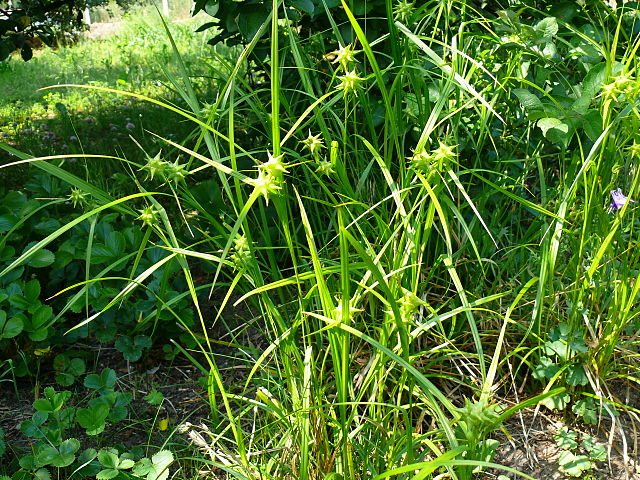
Bur Sedge
Carex grayi
NEW!
Sedges’ showy, bright green foliage and early appearance in spring are attracting more and more attention among gardeners. We’re offering bur sedge, so named because of its showy seed pods. It doesn’t like dry but will thrive or tolerate most other conditions.
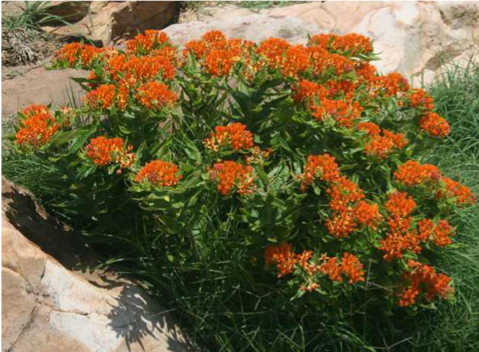
Butterflyweed
Asclepias tuberosa
SOLD OUT
This dandy plant grows in miserable sandy soil in full sun; once established, it is hardy as stone. Beloved by pollinators and humans alike, its blooms are regularly bedecked by monarchs. Plant butterflyweed and help keep our favorite butterfly coming back year after year.
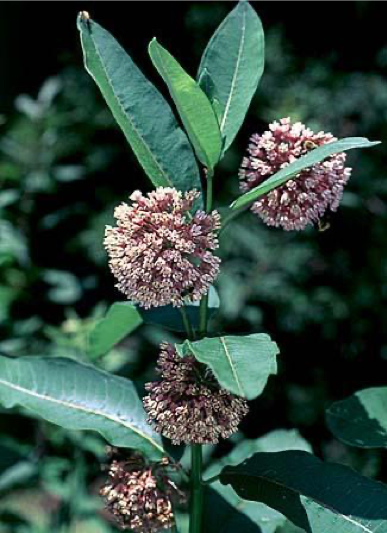
Common Milkweed
Asclepias syriaca
Will grow in nearly all soils, so long as they aren’t too wet. Plant in full to partial sun 1 foot apart. Beloved by butterflies, especially monarchs, which only lay their eggs on milkweed plants. Common milkweed is an aggressive spreader where it is happy, so give this plant some room to run and you won’t be disappointed.
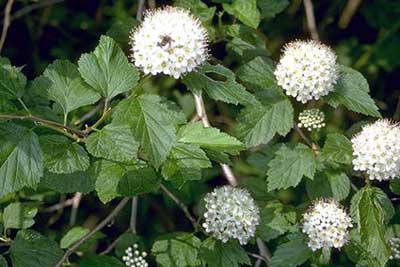
Common Ninebark
Physocarpus optilifolius
A perfect choice for incorporating a shrub layer in your garden, which wildlife use for both food and shelter. Covered with pretty white blossoms in mid-summer, ninebark is also extremely adaptable. Tough and beautiful, it gets up to 8 feet tall in good soil, but I’ve seen it growing only about a foot tall in cracks in rocky outcroppings.
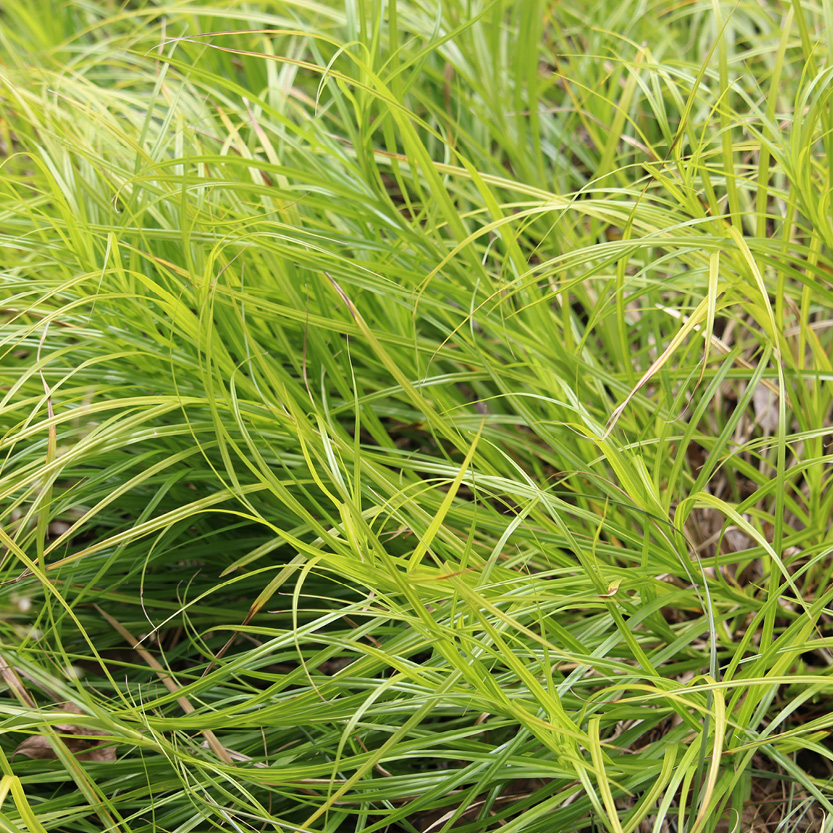
Copper Shouldered Oval Sedge
Carex bicknellii
Adaptable sedge that tolerates drier conditions. Especially recommended for slopes, bioretention basins, rain gardens and sedge meadows. Does well in full sun to partial shade, and can be compromised if shaded by taller, aggressive plants. Named for the copper-colored seed heads, which are beloved by birds, including sparrows and pheasants.
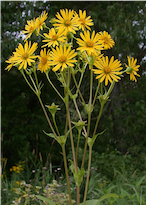
Cup Plant Silphium perfoliatum
Cup plant (or cupplant) is one impressive creature, maybe too impressive for some tastes, but with such magnificence, we thought, why not let you decide whether you want to chance it or not? Cup plants can get eight or even 10 feet tall and maybe four feet wide, and you bet they reseed themselves. Why grow them? Birds love the seeds. Pollinators love the cheery yellow flowers. Birds and bugs drink the water that collects where the leaves join the stem (thus “cup plant”). It’s a great screen and a stunning presence in the back of the garden. And of all the plants you grow, cup plant will be the one that causes visitors to do a double take. It does prefer moist soil, and while it droops when it’s dry, it will perk right up after a rain.
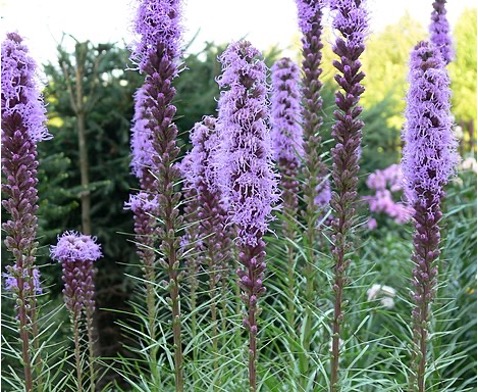
Dense Blazing Star
Liatris spicata
SOLD OUT
This gorgeous midsummer bloomer deserves a place in most any garden, so long as it’s not too dry; it might appreciate a drink during those occasional midsummer droughts. Consider pairing with another showstopper, purple coneflower. Very similar in appearance to prairie blazing star, Liatris spicata has even more flowers per head with smooth-pressed floral bracts, while the floral bracts of L. pycnostachya are clearly curved outward, or recurved.

Downy Wood Mint
Blephilia cilata
Does fine in sunshine as well as light shade and handles dry soils with aplomb. Downy Wood Mint is an early-season favorite of pollinators, not to mention certain gardeners, who delight in the pagoda-shaped blooms. The deer leave it alone, and it doesn’t take over. What more could anyone want?
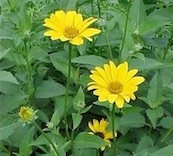
False Sunflower
Heliopsis helianthoides
Easy to grow and very pretty, false sunflower (aka early sunflower) loves sun and just about any soil or moisture condition, though it does appreciate a little extra dampness. It can form a focal point at the back of the garden and is beloved by pollinators and birds. Bonus! Beautiful sunflower-type flowers without sunflowers’ tendency to spread.
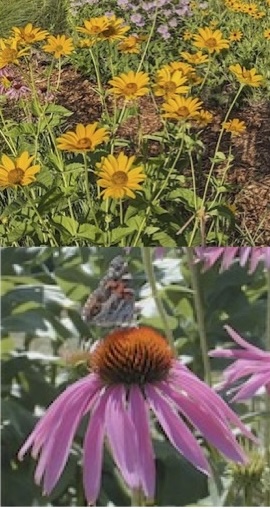
Garden Showstoppers
A great deal on two fabulous plants
This summer, we have an abundance of two of the most garden-worthy native plants, and we thought we’d pass on the joy. Both false sunflower and purple coneflower love similar conditions, and it’s hard to decide which is the showiest. Now you don’t have to. We’re offering three each for $12 in our special Garden Showstoppers collection.
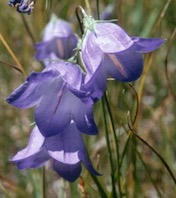
Harebell Campanula rotundifolia
SOLD OUT
Grow in full or part sun in sandy soils and gravel, planting 6 inches apart. These are the same lovely blooms as the bluebells of Scotland. You may have seen them growing in rocky cracks; they are much more vigorous in the garden.

Helen’s Flower/Dogtooth Daisy
Helenium autumnale
This delightful plant loves full sun and all kinds of soils, doing best if they are damp. The charming flowers bloom en masse late in the season—maybe plant several together in a nice clump. The genus is thought to have been named by Linnaeus (the guy who began giving plants scientific names) for the world’s most beautiful woman, Helen of Troy. Legend has it that the flowers sprung up from the ground where her tears fell.

Hairy Mountain Mint
Pycnanthemum verticillatum var. pilosum
NEW!
OUT OF STOCK
People find hairy mountain mint pretty, but pollinators consider it irresistible. It’s easy to grow, pretty, a nice size… it might be a spreader, so when you plant it, consider the neighborhood.
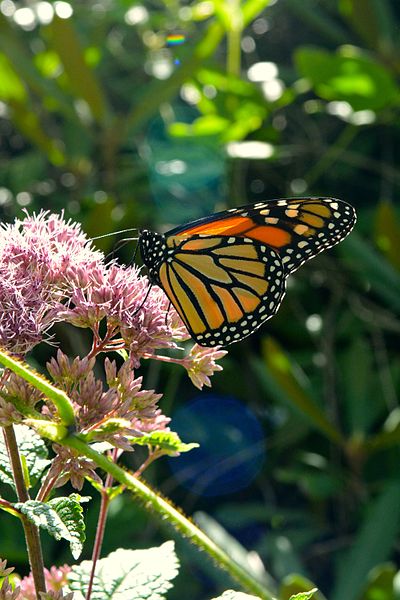
Joe Pye Weed
Eutrochium maculaum
OUT OF STOCK
Even those who don’t know much about wildflowers will recognize this denizen of damp ditches. Native to the Keweenaw (and most of the Upper Midwest and Northeast) Joe Pye weed is a favorite for its striking flowers, which attract butterflies and other insects. Yes, you can grow it in your garden, especially if you have a sunny, soggy place.

Lance-leaf Coreopsis Coreopsis lanceolata
Lance-leaf coreopsis is the hands-down workhorse of the summer garden, throwing an exuberant display of flowers when it seems like every other plant has thrown in the towel. Dead-head to keep the show going on, and on, and on. As you would expect, lance-leaf coreopsis is not fussy. It just likes lots of sun and not too much water.
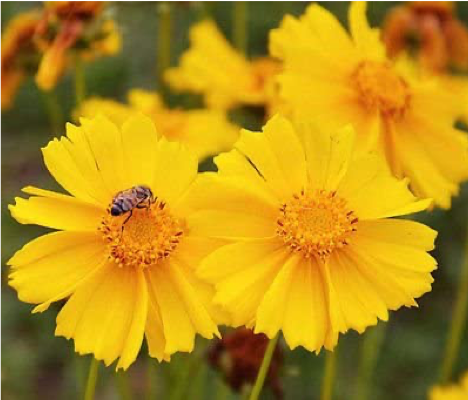
Mini-Gardens for Butterflies and Bees
Our three mini-gardens for butterflies provide nectar and pollen over a long season. The gardens feature different types of milkweed: red milkweed for damper conditions, butterflyweed for dryer conditions, and common milkweed for places where this racehorse has room to run.
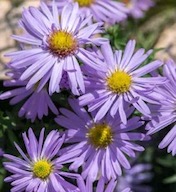
New England Aster Aster novae-angliae
OUT OF STOCK
Tons of gorgeous pink to purple blooms in the fall are a late-season godsend for butterflies and other pollinators. Good luck counting how many species you can find at one time nectaring on this aster. Can get tall and leggy, so if that bugs you, pinch back in early summer or put in the back of the border. Likes sun and partial shade and almost all soils, so long as they aren’t super dry.
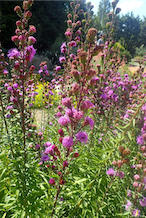
Northern Blazing Star Liatris scariosa
OUT OF STOCK
Northern Blazing Star (aka rough blazing star) adds vertical accent and a late summer bloom to the prairie garden. Due to the abundance of flowers, the plant may need to be staked. Northern Blazing Star is easily grown, tough and drought-tolerant, happy in the worst places: open rocky woodlands, sand barrens, dry banks, and medium to dry prairies.
The foliage may need to be protected from browse until the plant is fully established. Pair with Purple Coneflower, Goldenrod, Spotted Bee Balm, Little Bluestem and Big Bluestem.
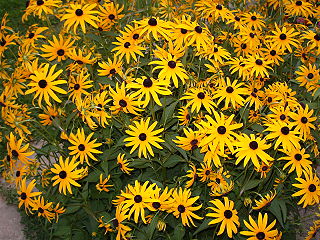
Orange Coneflower
Rudbeckia fulgida
SOLD OUT
If you love your Black-Eyed Susans but wish they would be a little more mannerly, check out this refined relative. Orange Coneflower sends up a mass of lovely golden flower above a well-behaved mound of dark-green leaves. Plus, it comes back year after year, unlike its biennial counterpart. One caveat: Orange Coneflower is not a fan of super-dry conditions, so consider that before making your final decision.
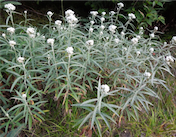
Pearly Everlasting
Anaphalis margaritacea
This underused plant thrives in sun and sandy soil with a bit of moisture. It’s a great filler, and the blossoms are charming. It is a host plant for caterpillars of the American lady butterfly, but it can handle being munched on once it is established. These two species have known each other for a long time.
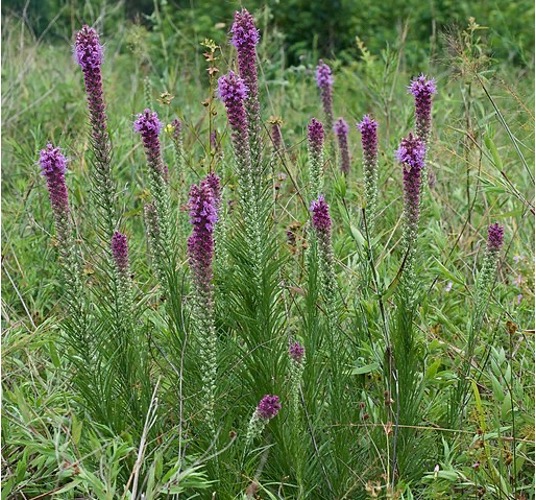
Prairie Blazing Star
Liatris pycnostachya
SOLD OUT
Fabulous garden plant that goes marvelously with purple coneflower. Deer have eaten the spires in my yard, so if they are a problem for you, you may want to protect these guys with a little Liquid Fence. That said, it’s worth the time and trouble to grow this “What’s THAT?” flower. It likes damp conditions but does not require them. Good garden soil will do the trick.

Prairie Coneflower
Ratibida columnifera
This cheery plant blooms throughout the summer, filling in happily when others are trying to make up their minds to flower. The blossoms, which can vary in color from golden to red, are held aloft on stiff stems and are generally at their best in a mass planting. As you might expect, this sun lover grows well in a variety of conditions, so long as they aren’t too wet. Also known as Mexican hat.
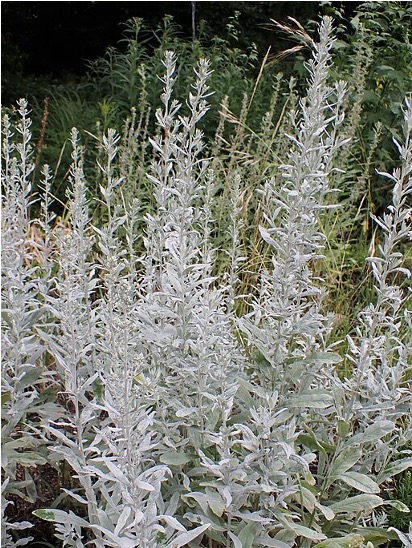
Prairie Sage
Artemisia ludoviciana
SOLD OUT
An attractive–and aggressive–groundcover, prairie sage is sacred to the people who originally settled in the Keweenaw. It loves rocky, sandy soil; installing it in a tough spot where other plants fear to tread would be a good strategy. It’s silvery foliage is lovely, and it smells divine.
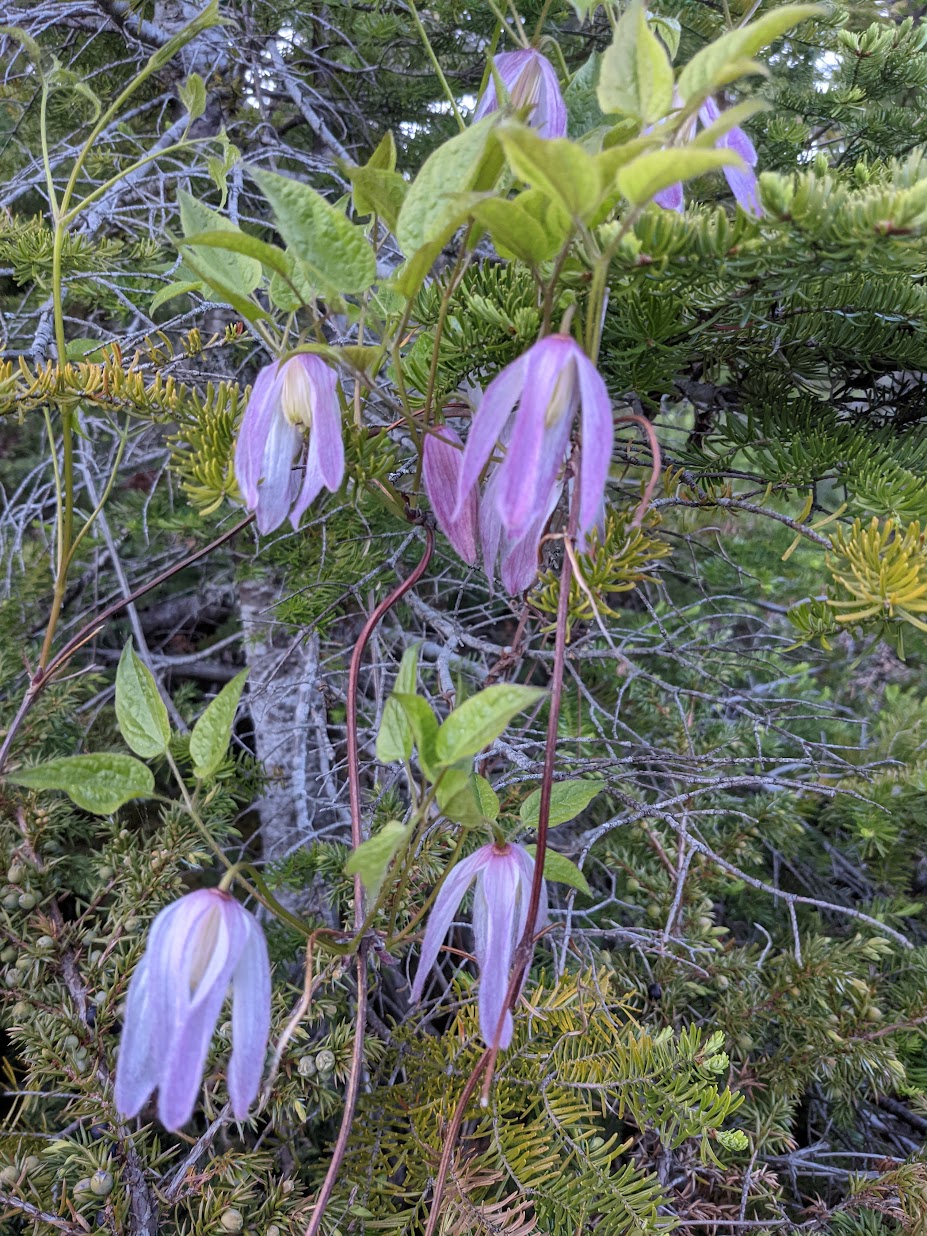
Purple Clematis
Clematis occidentalis var. occidentalis
NEW!
SOLD OUT 🙁
We’re pleased to be able to offer this rare and unusual vine. Listed as being of special concern in Michigan, it’s mainly found on Isle Royale, though specimens have been spotted elsewhere, mainly in the Western U.P.
Purple clematis has not been well studied, but it appears to do better in disturbed sites, and what is a garden but a disturbed site? Give it a shot.
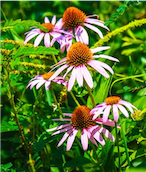
Purple Coneflower
Echinacea purpurea
The gateway plant leading to a lifelong addiction to native gardening. With a handful of other natives (black-eyed Susan comes to mind), purple coneflower can lure even the most conventional gardener to consider transforming a corner of their yard into a wild paradise. It’s gorgeous, familiar, adaptable, and well-behaved. Not to mention easy to grow in average well-drained soil in full sun to partial shade.
And yes, even though purple coneflower looks like it could have leapt off the pages of a conventional seed catalog, it is definitely loved by birds and pollinators—not just us humans.
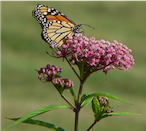
Red Milkweed
Asclepias incarnata
Also known as Swamp Milkweed or Rose Milkweed, Red Milkweed has a lovely fragrance and is a host for Monarch and Swallowtail butterflies. It’s flowers are less red than rose and are held above the plant, where you can watch pollinators of all stripes settling in for a banquet. Red Milkweed is happy in damp and will tolerate temporary flooding. But it is pretty adaptable; I’ve seen it growing in a hot, dry strawberry bed. However, don’t expect to be able to transplant it once it grows up. It has a taproot and would rather die than change its address.

Showy Goldenrod
Solidago speciosa
A gold-medal plant for pollinators, Showy Goldenrod deserves to be planted a lot more than it is. This is one fantastic fall bloomer, flowering a little later than most goldenrods and thereby providing a late season nectar source for Monarch butterflies and other pollinators. It has a showy feathery plume on a red stem and looks good paired with Black-eyed Susan, Stiff Gentian, Blazing Stars, and all by its gorgeous self.
Showy Goldenrod tolerates a range of soils as long as there is good drainage. The plant can be grown in prairies, fields, thin rocky soil and on dry, open, sandy ground. Best in poorer soils and/or with competition, so it doesn’t overgrow.
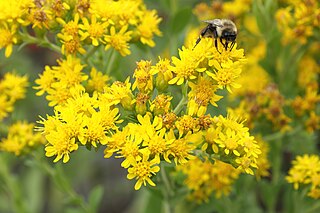
Stiff Goldenrod
Oligoneuron rigidum
NEW!
A tough customer that nevertheless is not especially aggressive and is very forgiving when it comes to growing conditions. Like all goldenrods, it is beloved by pollinators, and its foliage has a gray-green cast that’s extra pretty.
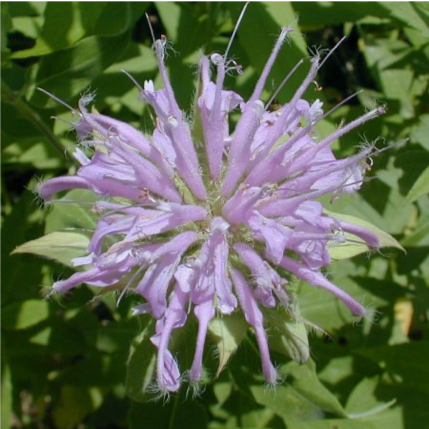
Wild Bergamot
Monarda fistulosa
A showy addition to the native garden, wild bergamot has a special advantage in being on deer’s do-not-eat list. The flowers are gorgeous and a favorite of hummingbirds. The long bloom period provides a continuing source of food for many pollinators.
Fair warning: It is susceptible to mildew. Good air circulation helps, as does dividing large plants every two to three years. That said, a little mildew is a small price to pay for this treasure.
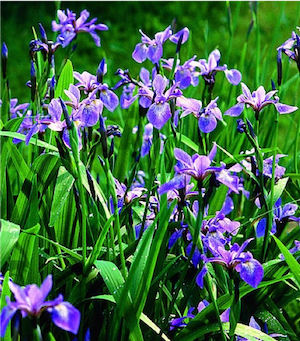
Wet and Wild Collection
Thirteen sun- and water-loving plants for soggy places, from the lakeshore to low spots on the edge of the woods. These denizens of dampness include blue iris, red milkweed, and Helen’s flower.
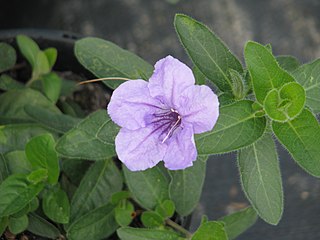
Wild Petunia
Ruellia humilis
NEW!
A low-growing denizen of prairies and oak openings, wild petunia is a lovely little border plant that starts blooming in midsummer and continues throwing flowers through fall. It does well in poor soil, thanks to its taproot, and plays well with others.
